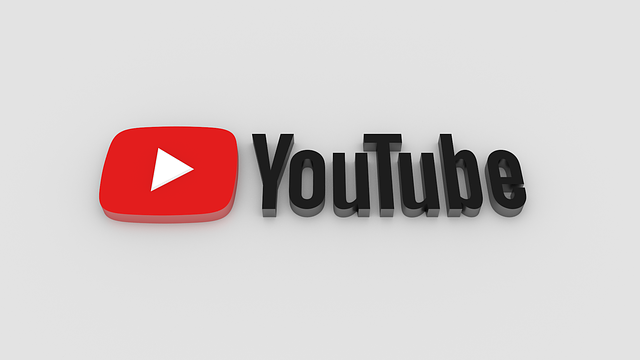Is YouTube Shorts Safer than Tiktok?
Written by: Hrishikesh Pardeshi, Founder at Flexiple, buildd & Remote Tools.
Last updated: May 27, 2024
Yes, YouTube Shorts is generally considered safer than TikTok. When comparing the two platforms, several factors come into play, such as data privacy, content moderation, and user safety policies. YouTube Shorts benefits from the robust safety and privacy protocols already established by YouTube, including stringent content moderation tools and comprehensive community guidelines designed to protect users from harmful content.
In contrast, TikTok has faced significant scrutiny over its data privacy practices and challenges in moderating inappropriate content and misinformation. While both platforms aim to create safe environments, YouTube Shorts may have an advantage due to YouTube's long-standing commitment to user safety and its established infrastructure for managing content and privacy concerns. However, it's important for users to stay informed about each platform's safety measures to ensure a secure experience.

Table of Contents
- How Do YouTube Shorts and TikTok Ensure User Safety?
- Comparing the Safety Features of YouTube & TikTok
- Which Platform Has Better Content Moderation Safety: YouTube or TikTok?
- How Do YouTube Shorts and TikTok Handle Data Security?
- What Are the Privacy Policies of YouTube Shorts and TikTok?
- FAQs On Is YouTube Shorts Safer than TikTok?
How Do YouTube Shorts and TikTok Ensure User Safety?
YouTube Shorts, youtube kids and TikTok, which are short form video platforms ensure user safety through robust content moderation, allowing for the swift identification and removal of inappropriate content. Both platforms provide reporting tools for users to flag violations of community guidelines, fostering a proactive approach to maintaining a safe environment through video title. Additionally, comprehensive community guidelines serve as reference points for users and content creators, promoting respect and responsibility.
Digital wellbeing features, such as screen time management and content filtering, enhance the overall online experience and protect users, particularly younger audiences. Furthermore, data security measures, including encryption and privacy policies, safeguard user information from unauthorized access. Overall, YouTube Shorts and TikTok prioritize user safety through a multifaceted approach that addresses various aspects of online safety, security and wellbeing for young people.
Looking for punny team names? Here are Punny Team Names for Trivia, Sports, Soccer & More
YouTube Shorts Safety Measures
YouTube Shorts, a relatively new feature of the YouTube platform, prioritizes user safety through several key measures.
1. Content Moderation: YouTube employs a combination of automated systems and human moderators to review adult content and educational videos uploaded to Shorts. This ensures that inappropriate or harmful content is swiftly identified and removed from the platform.
2. Reporting Tools: YouTube provides users with easy-to-use reporting tools to flag content that violates community guidelines. This empowers users to play an active role in maintaining a safe and positive environment on the platform.
3. Community Guidelines: YouTube has established comprehensive community guidelines that outline what is and isn't allowed on the platform. These guidelines serve as a reference point for users and content creators, fostering a culture of respect and responsibility.
TikTok Safety Measures
Similarly, TikTok videos has implemented various safety measures to protect its user base, especially its younger audience one video only.
1. Digital Wellbeing Tools: TikTok offers a range of digital wellbeing tools interactive features that allow users to manage their screen time, filter comments, and restrict certain types of content. These tools promote a healthy and balanced online experience for users of all ages.
2. Community Guidelines: TikTok has stringent community guidelines in place to ensure that content uploaded to the platform adheres to certain standards of safety and appropriateness. These community guidelines review and are enforced through a combination of automated systems and human moderation.
3. Reporting and Blocking Features: TikTok provides users with reporting and blocking features to flag inappropriate content recommended videos or users and prevent further interaction. This helps users feel empowered to take control of their online experience and avoid potentially harmful situations.

Comparing the Safety Features of YouTube & TikTok
YouTube and TikTok prioritize user safety through robust safety features. YouTube employs a comprehensive content moderation system, combining automated algorithms and human reviewers, and offers reporting tools for users. Additionally, YouTube provides privacy settings for users to customize their experience.
Similarly, TikTok features a Digital Wellbeing tool for managing screen time and filtering content, along with community guidelines to promote respectful behavior. Both platforms are committed to fostering a safe environment for users, particularly for younger audiences.
Looking for military team names? Here are Military Team Names | Best, Cool, Alpha Team Names To Choose from
YouTube Safety Features
YouTube, being a well-established platform for new video and under the umbrella of Google, implements a range of safety features to protect its users. One notable feature is the robust content moderation system, which combines automated algorithms with human reviewers to detect and remove inappropriate content swiftly. YouTube also provides tools for users to report offensive or harmful content, ensuring a proactive approach to maintaining a safe environment.
Furthermore, YouTube offers various privacy settings that allow users to control who can view their content, comment on their videos, and interact with other users on their channel. This empowers users to customize their experience and video creator according to their comfort level and privacy preferences.
Looking for scramble team names? Here are Scramble Team Names: Funny,Dirty Names to Choose from
TikTok Safety Features
Similarly, TikTok has implemented several safety features to protect its users, particularly its younger audience. The platform has introduced a Digital Wellbeing feature, which allows users to manage their screen time, filter comments, and restrict certain types of video sharing and of content. TikTok also provides extensive community guidelines that outline what is and isn't acceptable behavior on the platform, fostering a culture of respect and safety on diverse site.
Additionally, TikTok has rolled out features many parents like Restricted Mode, which filters out potentially inappropriate content, and Family Pairing, which enables parents to link their accounts with their children's accounts for greater oversight and parental control apps well.

Which Platform Has Better Content Moderation Safety: YouTube or TikTok?
Both YouTube and TikTok prioritize content moderation to maintain a safe and positive user experience to upload videos. However, the effectiveness of their moderation practices may vary due to factors such as the volume of content uploaded, the diversity of their user base, and the sophistication of their moderation algorithms.
YouTube's long-standing presence in the digital landscape has allowed it to refine its content moderation systems over time, resulting in a relatively effective approach to identifying and removing harmful content. With a combination of automated tools and human oversight, YouTube strives to strike a balance between freedom of expression and protection against harmful content.
On the other hand, TikTok's rapid rise to prominence next video, has presented unique challenges in terms of content moderation. The platform's algorithm-driven content discovery mechanism can sometimes lead to the rapid spread of inappropriate or harmful content before it's detected and removed. However, TikTok has been proactive in addressing these issues by investing in AI technology and expanding its team of content moderators.
How Do YouTube Shorts and TikTok Handle Data Security?
YouTube Shorts and TikTok prioritize data security through encryption, secure storage, and privacy policies. YouTube benefits from Google's robust security practices, while TikTok emphasizes data minimization and user control. Both platforms comply with regulatory requirements and offer transparency regarding data handling. TikTok focuses on protecting minors with features like Family Pairing, while YouTube offers comprehensive privacy settings. Despite differences, both platforms are committed to safeguarding user data and continuously updating their practices to address evolving threats and regulations.
YouTube Shorts Data Security Measures
YouTube Shorts, being a part of the broader YouTube platform, follows the data security protocols established by its parent company, Google.
1. Encryption: YouTube employs encryption protocols to safeguard user data during transmission of video itself. This ensures that sensitive information, such as login credentials and video viewing history, remains protected from unauthorized access.
2. Secure Storage: User data collected through the YouTube app by Shorts is stored on secure servers with strict access controls and encryption mechanisms. This minimizes the risk of data breaches and unauthorized access to user information.
3. Privacy Policies: YouTube has comprehensive privacy policies that govern how user data is collected, used, and shared on the platform. These policies are regularly updated to reflect changes in data protection laws and industry best practices.
TikTok Data Security Measures
Similarly, TikTok has implemented measures to protect the privacy and security of user data on its platform.
1. Data Encryption: TikTok uses encryption technology to secure user data both in transit and at rest. This ensures that personal information remains protected from interception and unauthorized access.
2. Data Minimization: TikTok collects only the data necessary for providing its services and improving user experience. This principle of data minimization reduces the risk of exposure to sensitive information and enhances overall data security.
3. Transparency and Control: TikTok provides users with transparency and control over their data through privacy settings and personal preferences here. Users can choose who can view their content, interact with their account, create profiles, and access their personal information, empowering them to manage their privacy effectively.
Differences in Approach
While both YouTube Shorts and TikTok prioritize data security, there are key differences too in their approaches to handling user data.
1. Parent Company Influence: YouTube Shorts benefits from being part of Google, a company known for its robust data security practices and compliance with privacy regulations. This affiliation allows YouTube Shorts to leverage Google's expertise and resources in safeguarding user data.
2. Target Audience: TikTok has a younger user base compared to YouTube Shorts, which may influence its approach to data security. TikTok places a strong emphasis on protecting the privacy and safety of minors who watch short videos, implementing features like Family Pairing and Restricted Mode to enhance parental control and oversight short videos.
3. Regulatory Compliance: Both YouTube Shorts and TikTok are subject to data protection laws and regulations in various jurisdictions. Ensuring compliance with these laws requires ongoing efforts to update policies, procedures, and technical controls to address evolving threats and regulatory requirements.
In conclusion, both YouTube Shorts and TikTok are committed to protecting user data through encryption, secure storage, privacy policies, and transparency measures. While their approaches may differ in certain aspects, the overarching goal remains the same: to provide users with a safe and secure platform for sharing and engaging with content. By prioritizing data security, both platforms aim to build trust and confidence among their user base while mitigating the risks associated with online privacy and security threats.

What Are the Privacy Policies of YouTube Shorts and TikTok?
YouTube, as part of Google, adheres to Google's comprehensive privacy policy, which outlines how user data is collected, used, and protected across Google's services. This includes information collected through YouTube Shorts, such as viewing history, interactions with videos, and device identifiers. Google emphasizes transparency and user control, allowing users to access and manage their data through their Google Account settings.
Similarly, TikTok has a dedicated privacy policy that governs the collection, use, and sharing of user data on the platform. TikTok collects a wide range of data, including user-generated video content, device information, location data, and behavioral data for advertising purposes. However, TikTok also offers users control over their privacy settings, allowing them to manage their account preferences and data sharing options.
FAQs On Is YouTube Shorts Safer than TikTok?
1. Are YouTube Shorts safer for children than TikTok?
Both platforms offer safety features tailored to younger users, but parental supervision and guidance are essential regardless of the platform.
2. Can I trust YouTube Shorts and TikTok with my personal information?
Both platforms have privacy policies in place to protect user data, but users should familiarize themselves with these policies and adjust their privacy settings accordingly.
3. Which platform has better content moderation: YouTube or TikTok?
Both social media platforms employ content moderation practices, but the effectiveness may vary depending on factors such as the type of content and the platform's moderation resources.
4. Are there any age restrictions for using YouTube Shorts and TikTok?
Both platforms have age restrictions in place to ensure the safety of younger users. Users typically need to be at least 13 years old to create an account and funny videos on TikTok, while YouTube Shorts also recommends its platform for users aged 13 and above. However, parental supervision and guidance are still essential for users of all ages.
5. How do YouTube Shorts and TikTok handle cyberbullying and harassment?
Both platforms have policies and reporting mechanisms in place to address cyberbullying and harassment. Users can report inappropriate behavior or content, and the platforms take measures to investigate and take action against offenders. Additionally, features like comment filters and privacy settings allow users to control their online interactions and reduce the risk of encountering harmful behavior.